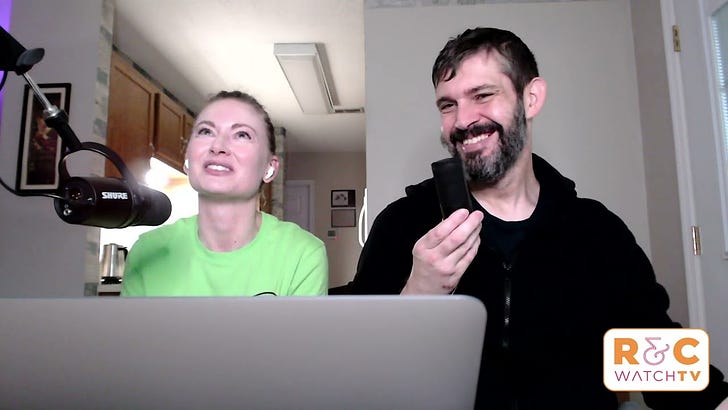Welcome to the 25th TV Tuesday!
I thought for sure I’d written about the Jane Fonda HBO (sorry, Max) miniseries on but it turns out I’d just tweeted about it. I found it extremely relatable, apparently, when she left her husband to go do political activism full time, got woke, got on speed, and hated the patriarchy while dieting constantly. Who among us?
I’m thinking about it because I recently had my high school crush over, looking for something to watch, when I saw Tina on Max.
As many a child of the 80s and 90s, I was a celebrity gossip connoisseur. Thursday nights my sister, mom, and I would grab snacks and magazines at the corner store, a Sprite, Snickers, and Cosmo for me usually. Mom would buy a National Enquirer, which I’d read after her. And we’d settle in for Must See TV.
Going into the documentary, I knew the basics of Tina’s backstory through tabloids and VH1. She’d been married to Ike Turner. They’d had some success in the music industry. He’d beaten her and she’d left him and then went on to superstardom.
Plus, What’s Love Got to Do With It was absolutely inescapable when I was a kid.
As was Tina Turner’s visage, with the hair and eyeshadow and LEGS.
I must admit, she looked slightly ridiculous to me, strutting around in minidresses and so much makeup as a clearly middle-aged woman. Misogyny is everywhere, but especially for Evangelical pre-teens growing up in the deep south thirty years ago.
Women must be sexy, of course. Our whole worth is tied up in our ability to catch and keep a man. Men are visual creatures, I was constantly reminded. As if women do not also have eyes and libidos. But we must never, ever try to be sexy. If you try and succeed, you’re a whore. If you try and fail, you’re pitiful. The only acceptable way is sexy and the only acceptable sexy is effortless.
Despite all that, Tina Turner also somehow existed outside the narrow aperture of acceptable female behavior. I wonder how much it had to do with her Blackness. I read a study in college that said Black girls suffer less harm from looking at anorexic models in magazines because they don’t see those women as aspirational. They exist outside of those requirements. For whatever reasons, Tina seemed to read less as “trying to be sexy” and more as “succeeding wildy at being Tina.”
The movie put her clothing, hair, and makeup even more into context by explaining that she didn’t get to be a 20-something until she was in her late 40s. Like parts of the Fonda story, I related to that. Although to say I had an easier time is a massive understatement. She left an abusive husband in middle age. I left my very nice husband at 26. But I do remember sometimes feeling super embarrassed to be having my early 20s in my late 20s.
But the most interesting part of the documentary was Tina’s mom.
I think you need to be a little bit broken to want to be famous. I met someone recently who said he had a record deal in front of him when he was younger and didn’t sign it. As I’ve been listening to a lot of the Bandsplain podcast recently, I said I totally get it. The best thing is to be rich and not famous. The worst thing is to be famous and not rich. Most touring musicians seem to get way more famous than rich.
I suspect fame is especially appealing to people with insecure attachment styles. And I say this as someone who once wanted to be famous (and who still wants my work, at least, to have a wide reach) and who has a disorganized attachment style.
Parasocial or one-to-many relationships require a vulnerability that is, at least to me, less frightening than what’s required for one-to-one relationships.
Far be it from me to assign Tina an attachment style posthumously based on one documentary. But damn if her mom wasn’t giving vulnerable narcissist. It just seems to me like between her mother who didn’t like her and made no attempt to hide it and her abusive ex, who could blame Tina for seeking love from millions of people rather than from anyone nearby?
A lot about fame frankly sucks. But it’s also magical to impact many people’s lives positively. At the same time, I’ve learned that one-to-many relationships cannot, for me at least, fully substitute for one-to-one relationships.
So it was extra sweet to me, as a 37-year old spinster crone, to see Tina find lifelong love in middle age. Not only did this queen’s husband say he still gets butterflies when he looks at her in her 80s, but I saw on Twitter that he donated a kidney to her.
IF THE LOVE AIN’T LIKE THAT I DON’T WANT IT.
Ahem.
The doc also went into how racism impacted Tina’s career and how she wanted to sing rock music. She was too white for the Black outlets but too Black for the white ones. None of that had ever occurred to me.
The doc did a great job quickly filling in the contours of a story on the periphery of my childhood. And it illustrated aspects of how race and gender influence the music industry.
Lastly, it was a fascinating psychological case study. Turns out the answer to the question of what love has to do with it is everything.
Sex and the State is a newsletter at the intersection of policy and people. Like it? Upgrade to a paid subscription, buy a guide, follow me on Twitter, support me on Patreon, or just share this post 🙏
~~~~~
This ⬇️ is an affiliate link! Sign up today to support me!
Join the reading revolution! Get key ideas from bestselling non-fiction books, distilled by experts into bitesize text and audio. Explore our vast library of over 5,500 titles and stay up-to-date with 40 new titles added each month.
















Share this post